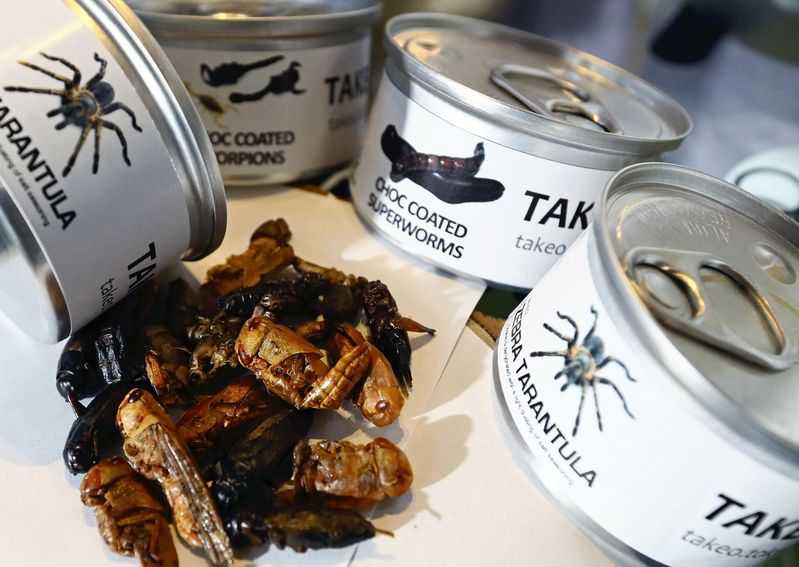Scientists push insects as green alternative to meat
12 June, 2019

Fancy starting your morning with some grub granola? Or having a wrap for lunch made with insect flour? How about ending the day with stir-fried or barbecued crickets for dinner?
Despite most people balking at the idea of eating bugs, such insect-based foods could become ubiquitous in Europe in the next decade or so, according to Lars-Henrik Lau Heckmann, a biologist at the Danish Technological Institute (DTI) in Aarhus.
The DTI is leading the three-year project inVALUABLE, one of Europe’s largest research programs on industrial-scale production of insects — particularly mealworms — as a more environmentally-friendly food for people and animals.
“I believe ... young people will find it very natural to make pasta and wok dishes with insects as they today eat sushi,” said Heckmann, standing next to trays of mealworms stacked on top of each other on 3-meter-high metal frames.
Insect farming is a small but growing industry globally with bugs touted as a sustainable and cheap food that is high in protein, vitamins, fiber and minerals, while their cultivation has much less environmental impact than meat.
Environmental groups such as WWF have raised concerns that growing demand for animal protein has led to more cultivation of soybeans to feed livestock and that is causing deforestation.
The United Nations’ Food and Agriculture Organization (FAO) has highlighted that insects emit fewer greenhouse gases and less ammonia than cattle or pigs, require less land and water — and there are more than 1,900 edible insect species.
Scientists at Massachusetts-based Tufts University said in a paper in May that lab-grown insect meat that fed on plants and genetically modified for maximum growth could be the “ultimate green alternative” for nutrition and flavor to meat.
Michael Bom Frost, an associate professor at the University of Copenhagen, which is one of the other partners in in VALUABLE, praised the use of mealworms in granola.
Despite their name, mealworms are not worms but the larval form of the mealworm beetle that are packed with nutrients which has typically made them a pet food for reptiles, fish and birds as well as being used for fishing bait.
“We use mealworm larvae so the granola is nutty and has this tropical smell, like a cicada on a hot summer night in southern Europe,” Bom Frost told the Thomson Reuters Foundation, adding pancakes made from mealworm flour were also delicious.
He said his students had showcased these products at a local food market and the response had been positive.
With predictions that the insect market could grow significantly, it is not just scientists cooking up ways to put mealworm on the menu but also some of the world’s largest food and agricultural companies.
The International Platform of Insects for Food and Feed (IPIFF), a lobby group, has forecast that Europe’s insect protein production could surge to 1.2 million tons by 2025 from about 5,000 tons currently.
U.S. agricultural giant Cargill Inc. and McDonald’s Corp. are looking at insects as animal feed, while France’s Ynsect — which turns insects into food for fish, pets and plants — recently raised $125 million to build the world’s biggest insect farm.
Businesses serving up creative ways to consume insects include a Hong Kong-made DIY home incubator for mealworms, a Belgian beer flavored with insect protein, Danish energy bars, and pasta from Germany that is 40 percent cricket.
“There are a lot of people that want to try ... especially young people,” said Davide Rossi, who runs an online shop selling edible insects in Europe ranging from chilli cricket tortilla chips to buffalo worm flour.
“I think at some point ... you have no choice but to eat these, so better to start now and make them delicious,” added Rossi, whose shop 21bites also accepts payment in bitcoin.
Source:
